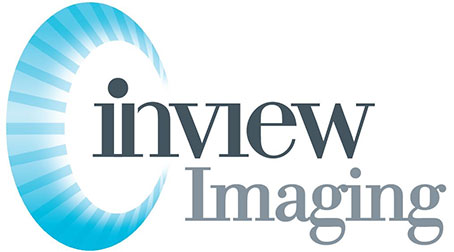Key Takeaways

-
Mammograms are an important tool in breast cancer screening, using low-dose x-rays to detect changes in breast tissue. Getting familiar with the differences between screening and diagnostic mammograms will help you better understand why they’re performed and why mammograms are important.
-
When to schedule your first mammogram Depending on your risk factors and age. Taking proactive steps in your 40s is always a good thing. Consult with your healthcare provider to determine the ideal timing. This is especially crucial for you if you have a family history of breast cancer.
-
Find a certified mammogram facility. Plan your visit carefully so you’re as comfortable as possible, and bring any relevant documents and prior imaging so you’ll have a hassle-free experience.
-
On the day of your mammogram, avoid deodorants and lotions. Choose a comfy two-piece ensemble and bring pain relief if you feel you’ll need it. Having a full stomach and being well-hydrated can help ensure comfort during the procedure.
-
Know what to expect during your mammogram, including the technologist’s role and the possibility of mild discomfort. Clear communication about what to expect throughout the procedure can help reduce anxiety and promote proper imaging.
-
Understanding common terms used in a mammogram report and follow-up discussion with a healthcare provider will help patients understand their results. Understanding what to expect for future steps—like needing more imaging or a biopsy— is essential to staying up-to-date in your breast health.
Knowing what to expect for your first mammogram makes the process easy and free of anxiety. Mammograms play a critical role in the early detection of breast cancer, providing high quality, clear images that help physicians make an accurate diagnosis.
Prepare by avoiding deodorants and lotions on the day of the exam. These products are no joke, they will mess up your image quality! Try to schedule your appointment for a week after your menstrual cycle, which will make the procedure more comfortable.
Dressing in a two-piece ensemble makes the procedure a little easier. If it’s your first visit, plan to arrive 10 minutes early to fill out paperwork. If you have had mammograms before, it’s important to bring those images with you if possible.
Follow these easy tips for an easy and breezy day. That’s what will make your first mammogram a great step toward taking charge of your health.
Understanding Mammograms
This is why mammograms are so important to the screening process for breast cancer. They use low-dose x-rays to take highly accurate images of breast tissue. This simple procedure looks for any signs of unusual activity, and it is a crucial part of routine cancer screenings for women.
Two main types exist: screening mammograms, which are for routine checks, and diagnostic mammograms, which investigate specific issues. Mammograms help locate breast cancer sooner, sometimes up to three years before a woman would notice any symptoms.
Early detection is key, with a 99% 5-year survival rate when diagnosed at a localized stage.
What is a Mammogram?
A mammogram is an x-ray picture of the breast that allows a doctor to look for any unusual changes in breast tissue. Facilities are required to return results within 30 days, or in less time if an abnormality is found.
Advanced technology, such as digital and 3D mammography, improves the sharpness and detail of the images, helping doctors to detect even the smallest changes between exams. Mammograms generally take less than 30 minutes and knowing what to expect helps you feel comfortable and more likely to get screened.
When to Schedule Your First Mammogram
When to time your first mammogram Age and risk factors are factors to consider. Women need to start getting screened in their 40s, but if you have a family history, you may need to get screened earlier.
Talk to your healthcare provider to find out what the right schedule is for you. To reduce discomfort, skip the week before and the week of your period, when breasts are most tender.
Discussing Breast Changes with Your Doctor
So open communication about any changes to the breast is extremely important. Talking about your medical history and asking about screening options gives you the tools you need to make informed choices.
Starting the conversation early means we can take timely action when necessary, keeping you ahead of the curve and in control of your breast health.
Preparing for Your Mammogram
Overall, the better prepared you are going into your first mammogram, the better your experience and comfort will be. Here are some general tips to keep in mind:
-
Please do not use any deodorants, antiperspirants, powders, lotions, creams or perfumes on the day of your exam. These products can show up as white dots on the X-ray.
-
Schedule your appointment with consideration. If you have your period, try to plan your visit for one to two weeks after your period starts. This is when your breasts will be at a minimum of tenderness. Choosing a morning appointment can help lessen anxiety.
-
Wear a two-piece outfit that makes it easy to undress from the waist up. A two-piece, separates outfit works well.
-
Bring any required paperwork, including a doctor’s order, your insurance information, and a valid form of ID. Finally, prior mammogram films are key to comparison.
-
Read on to learn how to prepare for your mammogram and what to expect. This procedure requires that the breast be compressed in order to get a good quality image. If you’ll be getting a 3D mammogram, the machine will move in an arc around your breast to take each image.
1. Choose the Right Facility
Doing your homework on certified mammogram facilities can make all the difference. Seek out facilities that are designated as Breast Imaging Centers of Excellence.
Facilities with digital mammography provide you with this cutting-edge imaging. Look at patient reviews to get a broader picture.
2. Schedule Wisely for Comfort
It’s important to plan your appointment for a time when you’re least likely to experience breast tenderness. Try to not plan your mammogram while you’re on your period.
Early morning appointments minimize your wait time so you can be more comfortable before and after the procedure.
3. Gather Necessary Documents
Gather required paperwork, such as your doctor’s order and insurance information. Have an accepted form of ID with you so you may check in.
It’s particularly important to have past mammogram images available if you’re going to a new facility.
4. Prepare Previous Mammogram Records
Obtain prior mammograms and reports to take to your appointment. Well-organized records make it easier for the radiologist to detect any changes in your breast tissue over time.
Check with the facility to see if any special formats are required.
Day of the Mammogram Tips
When preparing for your first mammogram, there are several practical steps to ensure a smooth experience:
On the day of your exam, skip deodorants, lotions, or perfumes. These products can leave residues that block the imaging, so it’s safest to avoid. This ensures that you receive the most accurate results possible and protects your skin from irritation.
Send this tip to your friends or family! They may be getting ready for their first mammogram and your words of reassurance will go a long way.
Dress Comfortably in Two-Piece Outfit: Choosing a two-piece outfit like an easy-to-remove shirt with pants or a skirt simplifies undressing for the mammogram. Choose loose-fitting clothing made of comfortable fabrics, and consider skipping the underwire bra, as they can interfere with the imaging process.
If you’re concerned about discomfort, consider taking over-the-counter pain relievers like acetaminophen beforehand. Be sure to talk through pain management techniques with your healthcare provider so you know how to minimize any discomfort.
Keep in mind that any pain is temporary for the duration of the exam.
Eat and Drink Normally: Maintain your usual eating and drinking habits, as fasting isn’t necessary unless specified by your doctor. Being well-hydrated increases comfort and energy levels, which can help alleviate any anxiety surrounding the procedure.
What to Expect During the Mammogram
Understanding the Screening Process
When you arrive for your mammogram, be prepared for a simple but very important process. This typically takes 20 to 30 minutes to allow for multiple images to be taken. Expect to be turned in various directions to obtain the best possible images of your breast tissue.
The technologist, or mammographer, is a vital part of the team that will help you get the clearest images possible. They are highly qualified professionals who will walk you through every step to get the highest quality imaging.
Communicate with the Technologist
Communicating with your technologist can help make the experience more pleasant. Let them know any concerns or mobility issues you may have. They are there to make you feel comfortable and can help answer any questions you might have, calming your nerves.
Have confidence in their knowledge and skill and follow their lead as they guide you through the exam.
Anticipate Possible Discomfort
You will feel some mild discomfort, primarily from compression, which lasts for approximately 10 to 15 seconds per image. This compression is required to produce high quality images. If you are nervous, practice basic relaxation exercises.
Keep in mind that discomfort is subjective, but it is only temporary and generally tolerable.
Diagnostic Mammogram Details
A diagnostic mammogram is just a more detailed mammogram than a screening one, typically requiring additional images and angles. If you think you will need more time, arrange for a longer appointment.
Afterward, you’ll want to review findings with your health care provider to learn what the results mean. Diagnostic mammograms give doctors the detailed information they need to make a clear diagnosis and avoid misdiagnosis.
Interpreting Results and Follow-Up
Knowing how to interpret your mammogram results and what to do following them is vital to maintaining your breast health. Here’s a short list of what to know:
-
Results delivered through a letter, phone call, or through their patient portal with their healthcare provider.
-
Depending on demand, results can take a few days to a week to be processed.
-
If 10 days pass without a response, consider contacting your healthcare provider to inquire what happened.
-
Look for a summary of results within 30 days, or earlier if an abnormality is detected.
How Results are Communicated
While waiting for your mammogram results, expect to receive them from multiple sources. A simple letter, phone call, or even face-to-face engagement from your healthcare provider are all effective ways.
Blood results can take up to several days to a week, so be prepared to wait. If you haven’t heard back within 10 days, don’t assume normalcy—reach out proactively.
Test results can be complicated, so be ready to talk about them at your follow-up appointment to ensure you understand them.
Understanding Your Mammogram Findings
Mammogram reports typically describe findings as “normal,” “benign,” or “suspicious,” etc. Familiarity with these terms will serve you well in understanding T4.
Talk through the significance with your provider to understand their meanings. Keep in mind that not all abnormal results indicate cancer; additional testing may be required.
Asking the right questions about your results helps you get a complete picture.
Next Steps After Receiving Results
Based on your results, potential next steps may include:
-
Scheduling follow-up imaging or biopsies
-
Planning routine screenings
-
Discussing treatment options if diagnosed with breast cancer
Following through with recommendations is important for long-term breast health. Be smart and active on your breast cancer screening path.
Early detection is probably the most important factor in survivor outcomes.
Conclusion
Preparing for your first mammogram may seem intimidating. It really helps to know what to expect beforehand. By knowing what to expect, you know what to expect and feel more in control. From making your appointment to reviewing your results, each step is an opportunity to empower yourself with more knowledge about your health. Our complete guide takes you through every step of the process, providing you with the best advice in easy-to-understand language. It gives you the tools to take control of your health and peace of mind to do it. You learn a lot, and we think you’ll find the whole experience to be very rewarding. Take the first step toward better health today. Make an appointment for your first mammogram today and begin your journey toward peace of mind. Your health is worth it, so make a plan today!
Frequently Asked Questions
What is a mammogram?
A mammogram is simply an X-ray of the breast that helps find early signs of breast cancer. It’s crucial for early detection and makes treatment more effective.
How should I prepare for a mammogram?
Do not use deodorants, lotions, or perfumes on or near your breasts or underarms the day of the exam. Choose a two-piece ensemble to make things easier.
Is a mammogram painful?
Mammograms are not the most comfortable experience. The breast is compressed in order to capture a clear image, but the discomfort is temporary.
How long does a mammogram take?
Don’t worry, the whole process only takes 20 minutes. Each breast is X-rayed for only a few seconds.
What should I expect during a mammogram?
You’ll be asked to stand in front of an X-ray machine. Your breast is placed on a flat surface and compressed with a plastic paddle.
How soon will I get my mammogram results?
Your results will usually be ready within a week or two. Your healthcare provider should follow up with you to talk about them.
What happens if the mammogram shows an abnormality?
If your mammogram does show something abnormal, you may need additional testing, such as an ultrasound or a biopsy, to find out what it is.


